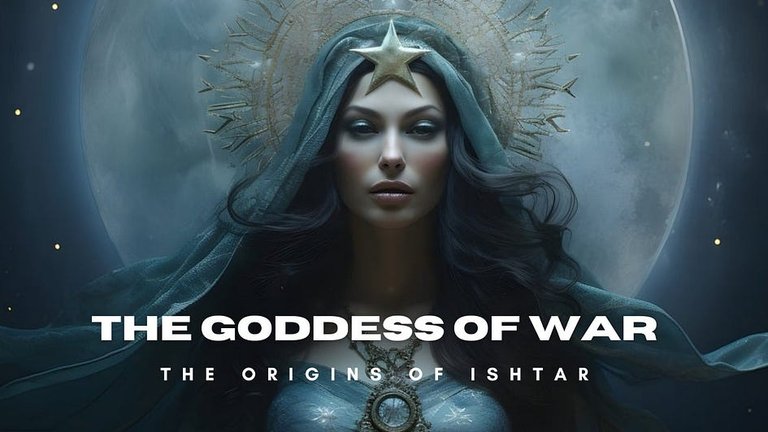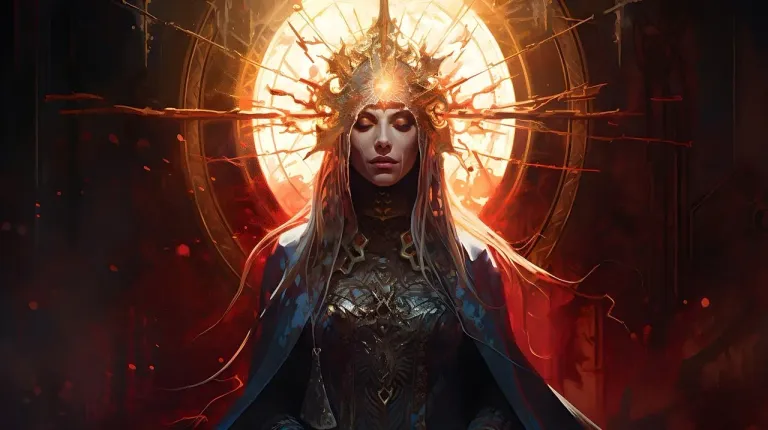The Goddess Of War

The Mesopotamian Goddess of Love and War
Ishtar, the Mesopotamian Goddess of Love and War, was a significant figure in the ancient Near East. For thousands of years, her worship spanned multiple civilizations, including the Sumerians, Akkadians, Babylonians, Assyrians, and others. Revered for her associations with love, sexuality, fertility, war, and political power, Ishtar was a multifaceted deity. Known by names such as Inanna, Astarte, and Aphrodite, Ishtar’s origins and roles in the ancient world provide fascinating subjects for study.
The Origins of Ishtar: The name “Ishtar” is derived from the Akkadian language, spoken by the people who ruled Mesopotamia from the 24th to the 6th century BCE. The Akkadians adopted Ishtar from the Sumerians, who referred to her as Inanna. The Sumerians were the first civilization to emerge in Mesopotamia, around the 4th millennium BCE. They developed a complex writing system called cuneiform, used to record myths, laws, and historical events. Inanna was one of the earliest deities documented in cuneiform texts, holding a prominent position in the Sumerian pantheon.
The meaning and origin of “Inanna” are uncertain, but it may relate to the Sumerian word “in,” which means “lady” or “queen.” Inanna was sometimes considered the daughter of An, the sky god, or Enlil, the wind god. She was also regarded as the wife or lover of Dumuzi, the god of vegetation and fertility. Inanna possessed various symbols and attributes, such as lions, owls, stars, and a hook-shaped knot of reeds called the ring-post. Additionally, she was associated with the planet Venus, viewed as her celestial manifestation.
Inanna had a complex and diverse personality. She was a goddess of love and beauty who enjoyed romance and sexuality. Simultaneously, she was also a goddess of war and violence, leading armies into battle and conquering enemies. As a goddess of life and death, she could bestow fertility or create droughts. She was a goddess of wisdom and cunning, capable of tricking or deceiving others. Furthermore, she embodied power and sovereignty, having the ability to grant kingship or overthrow rulers. Inanna also represented adventure and curiosity, traveling to different realms and facing various challenges.
Ishtar in Mesopotamian Mythology
Ishtar was a prominent figure in Mesopotamian mythology, and her worship extended beyond borders and cultures, influencing both the Akkadians and other Mesopotamian peoples. She assimilated aspects from other goddesses, such as Astarte, and became closely associated with Venus, the brightest star in the sky. Ishtar’s influence reached beyond Mesopotamia to regions like Anatolia, Egypt, Greece, and Rome. Her worship was characterized by numerous temples and shrines where priests and priestesses performed rituals and ceremonies in her honor. Some of these rituals included sacred prostitution, reflecting the depth of devotion to Ishtar.
Ishtar appears in various myths and legends that highlight her diverse roles and attributes. One of the most famous stories is “The Descent of Ishtar to the Underworld” (also known as “Inanna’s Descent”). In this tale, Ishtar decides to visit her sister Ereshkigal, the queen of the underworld. To enter, she must pass through seven gates, removing one piece of clothing or jewelry at each gate. When she finally arrives naked and powerless before Ereshkigal’s throne, she is struck dead by Ereshkigal’s gaze and hung on a hook like a piece of meat. Meanwhile, the earth becomes barren and lifeless without Ishtar’s presence. Her lover, Dumuzi (or his substitute), agrees to take her place in the underworld for half of the year, allowing her to return to life. This story symbolizes the cycle of seasons and vegetation in Mesopotamia.
Another well-known story is found in the “Epic of Gilgamesh.” In this narrative, Ishtar falls in love with Gilgamesh, the king of Uruk and a legendary hero. She proposes marriage to him, but he harshly rejects her, reminding her of how she mistreated her previous lovers. Enraged by his refusal, Ishtar asks her father, Anu, to send the Bull of Heaven to punish Gilgamesh. The bull wreaks havoc in Uruk until Gilgamesh and his friend Enkidu manage to kill it. In retaliation, Ishtar curses both of them for killing her sacred animal. Enkidu later succumbs to an illness sent by the gods as a result of this curse. Gilgamesh, grief-stricken, then embarks on a quest to discover the secret of immortality but ultimately fails. This tale illustrates the dangers and consequences of offending Ishtar’s pride and wrath.
Ishtar is a fascinating and complex figure who has captivated the imaginations of many generations. She embodies both the dark and light aspects of femininity and represents the challenges and opportunities of human existence. Ishtar is a symbol of mystery, power, and transformation.
Posted by Waivio guest: @waivio_cosmicsecrets
